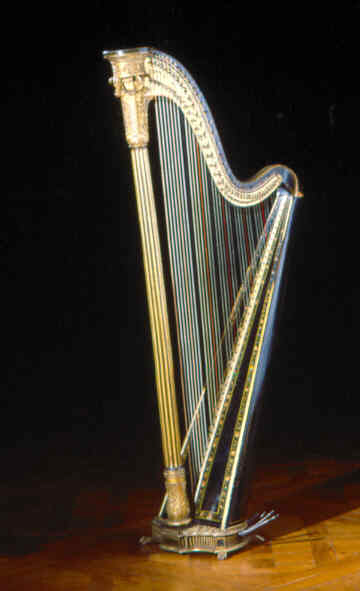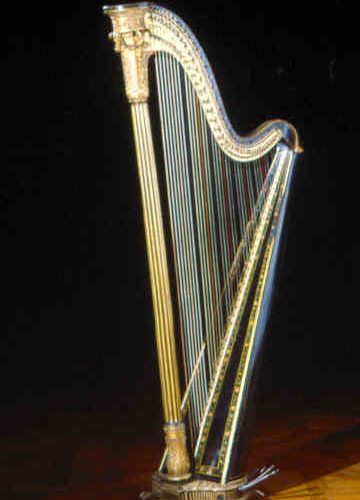Single-action harp
Sebastien Erard (1752–1831)
Japanned and gilded wood, 1802
Music played an important role in the eighteenth century, both in public settings and in domestic contexts. Musical accomplishment was a sign of refinement and sensibility, and the piano-forte and the harp were popular instruments for private music-making, particularly among women.
Sebastian Erard was a leading piano-forte and harp maker who trained in Paris and worked both there and in London. He started his career in France as a piano maker, but it was his talent as a harp designer what made his fortune. In 1810 he revolutionised harp design with the patenting of his ‘double-action’ harp. The double action allowed the pitch of each string to be either raised or lowered a semitone using the pedals. While the ‘single-action’ harp was limited to thirteen keys, the ‘double-action’ harp could play in all of them.
This ‘single-action’ instrument predates the sophisticated version. It was made in 1802 for a Miss Dupree of Dublin at a cost of £73. 10s. 0d. It is partly gilded, partly japanned, and painted with pink and blue flowers, a decoration for which the client was charged an extra 2 guineas. It is an early example of its kind and in almost original condition, though it is no longer playable for conservation reasons.


